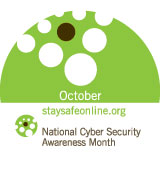The problem is that the information that can be used to figure out someone's Social Security number is the same sort of information that people generally don't think twice about sharing. All that is needed is a person's hometown and their birth date for a cunning identity thief to figure out most of their Social Security number. The rest of it is guesswork, but the Social Security Administration's rules make that guesswork significantly easier.
This is possible because current Social Security numbers are based largely on an individual's birth data. The first three digits of a Social Security number are a code indicating where an individual was born, while the next two digits are a code indicating when and where the Social Security number was applied for. Since most people will have their number applied for in the city they're born in, the combination of hometown and birth date makes it easy for identity thieves to look up this information and determine the first five digits of a Social Security number.
The last four digits of a Social Security number are randomly assigned, but they aren't truly random. Patterns are often used, and certain sets of numbers such as multiple zeros or three sixes are never used in Social Security numbers. Using a computer program and the process of elimination, identity thieves can eventually determine a person's real Social Security number without having any direct contact with them.
There are ways to prevent this from happening, of course. The simplest is to simply avoid displaying your hometown and or date of birth on Facebook. You can also adjust the security settings of your Facebook account so that only those you know personally have access to this information or access to your profile at all. Some people suggest using a using a false date of birth in online accounts and profiles so that would-be identity thieves end up with information that can't actually be used to figure out anything about them.
One of the easiest ways to make sure that this doesn't happen is to simply be careful about who has access to your personal information. In addition to adjusting your security settings, don't add anyone as a friend who you don't know. If someone requests to be friends and you see that they are friends with other friends of yours, ask your friends who the person is before adding him or her. Avoid adding random people from social games since you have no way of knowing whether their profile is real or fake.(See: Is your FB friend a Digital Criminal?)
On the plus side, the FTC and the Social Security Administration are learning from identity thieves and working to make it harder for identity theft to occur. Future generations won't have to worry about this sort of "information mining" that allows thieves an easy way to figure out Social Security numbers. As as of June 2011 all new Social Security numbers are to be randomly generated. The Social Security Administration is also planning to switch to a paperless notification system in place of the yearly mailings they send out to inform people of how much they have contributed to Social Security. Great first steps, but we must continue to be vigilant and innovative when finding new ways to safeguard our data.
You shouldn't stop using social networking sites based on the risks of fraud, anymore than you should quit driving based on the number of traffic accidents. You just need to be alert to the risks and place barriers between you and any predators.
To reduce your risk of becoming a victim of fraud it's important to stay informed about the latest scams, tricks and evolving methods that crafty criminals use to snare, and then use, your personally identifying information.


 NEWSLETTER SIGN UP
NEWSLETTER SIGN UP SUBSCRIBE
SUBSCRIBE CONTACT
CONTACT

















Leave a comment